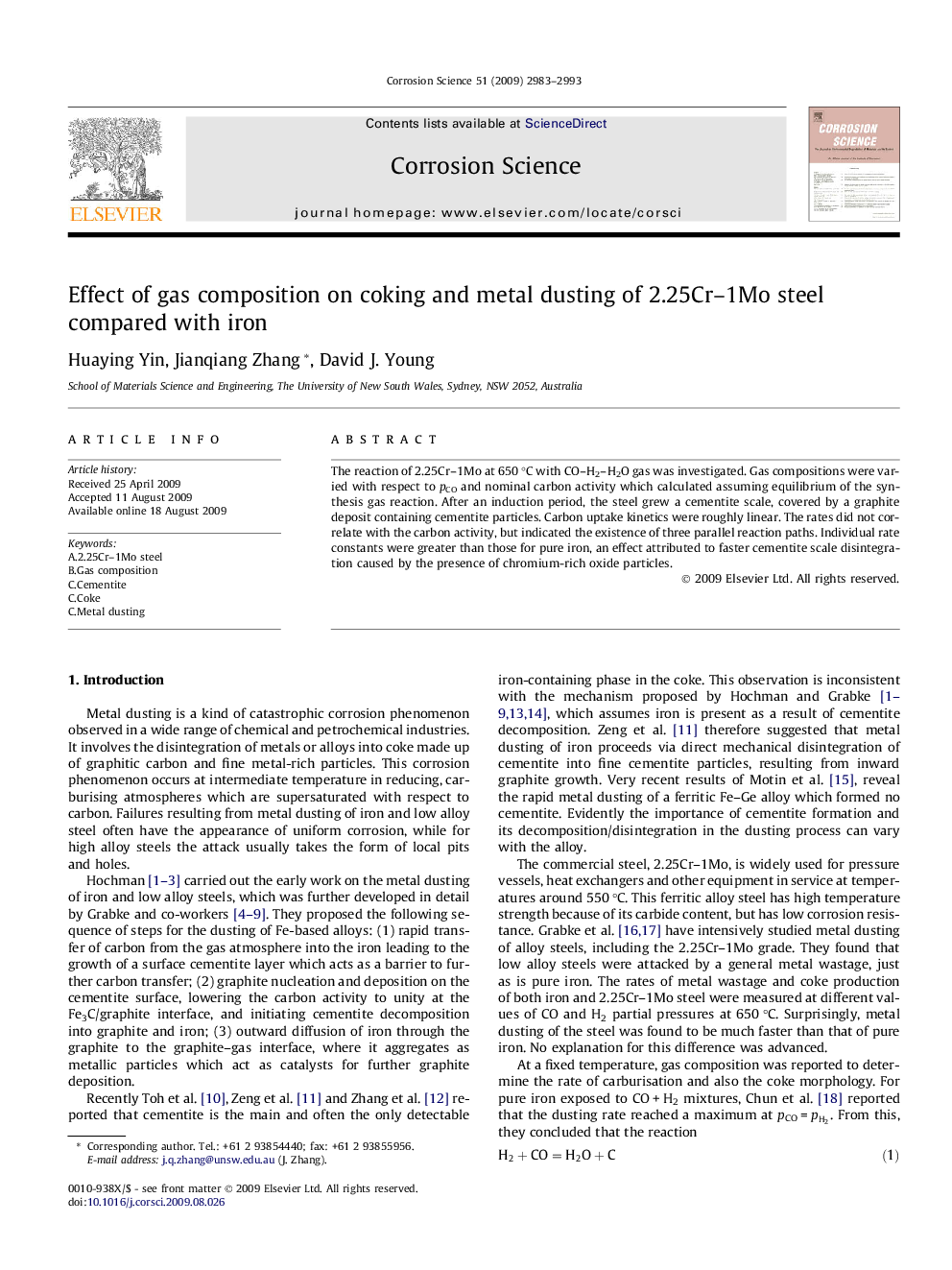| Article ID | Journal | Published Year | Pages | File Type |
|---|---|---|---|---|
| 1470789 | Corrosion Science | 2009 | 11 Pages |
Abstract
The reaction of 2.25Cr–1Mo at 650 °C with CO–H2–H2O gas was investigated. Gas compositions were varied with respect to pCO and nominal carbon activity which calculated assuming equilibrium of the synthesis gas reaction. After an induction period, the steel grew a cementite scale, covered by a graphite deposit containing cementite particles. Carbon uptake kinetics were roughly linear. The rates did not correlate with the carbon activity, but indicated the existence of three parallel reaction paths. Individual rate constants were greater than those for pure iron, an effect attributed to faster cementite scale disintegration caused by the presence of chromium-rich oxide particles.
Related Topics
Physical Sciences and Engineering
Materials Science
Ceramics and Composites
Authors
Huaying Yin, Jianqiang Zhang, David J. Young,
